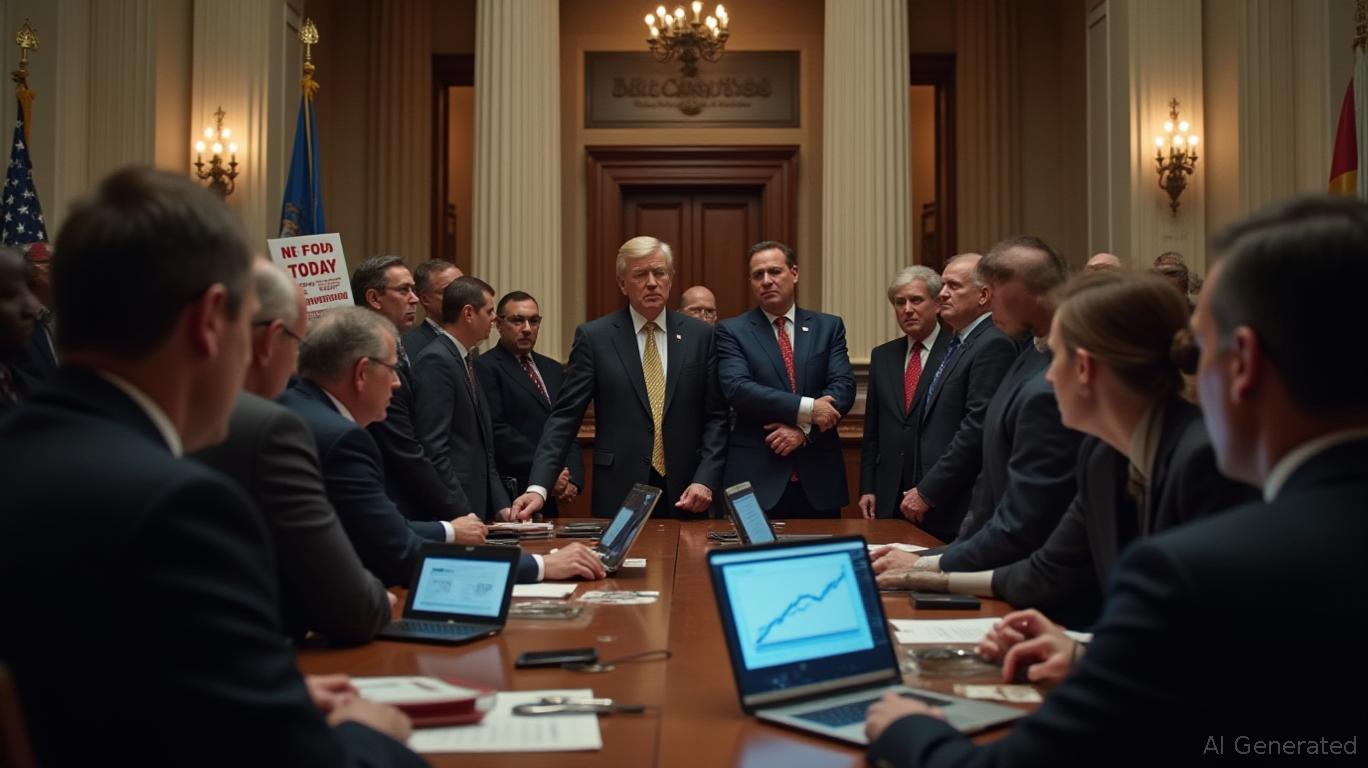OpenAI Adjusts Structure to Balance Profit and Philanthropy in $250 Billion Microsoft Agreement
- Microsoft and OpenAI finalize $250B cloud deal, with Microsoft securing 27% stake in OpenAI's public benefit corporation (PBC). - OpenAI transitions to PBC structure controlled by its nonprofit foundation, gaining operational flexibility while retaining philanthropic alignment. - Microsoft loses cloud service exclusivity but gains 2032 IP rights to AGI models, while OpenAI commits to $250B in Azure services. - Deal boosts Microsoft's market cap above $4 trillion and establishes new industry benchmarks fo
Microsoft (MSFT) and OpenAI have reached a historic $250 billion agreement centered on cloud computing, solidifying their alliance and transforming OpenAI’s organizational framework. As part of the arrangement,
This partnership grants Microsoft extended access to OpenAI’s intellectual property, including AGI-level models, through 2032. However, Microsoft has given up its exclusive right to be OpenAI’s first-choice cloud provider, a clause that had previously limited OpenAI’s collaborations. In return, OpenAI has agreed to spend $250 billion on Azure services over an unspecified timeframe, further establishing Microsoft as OpenAI’s main cloud partner for API-based offerings, as reported by

The reorganization has already influenced the market. Microsoft’s shares climbed by almost 4% after the news broke, boosting its market value past $4 trillion. Experts see the deal as mutually beneficial: OpenAI gains a clearer path for future investments, while Microsoft reinforces its leadership in AI infrastructure. Adam Sarhan, CEO of 50 Park Investments, remarked that the agreement “offers a more transparent route for progress and responsibility,” addressing previous concerns about OpenAI’s nonprofit model.
The financial aspects reveal the magnitude of the collaboration. Since 2019, Microsoft has invested $13.8 billion in OpenAI and now holds over 27% of the PBC on a diluted basis. The OpenAI Foundation maintains a controlling $130 billion stake in the for-profit division, ensuring its charitable objectives remain central. The deal also establishes an independent committee to validate OpenAI’s AGI achievements, and Microsoft’s IP rights are protected through 2032, even if AGI is realized sooner.
The agreement’s impact goes beyond financials. OpenAI’s “Stargate Project,” which involves building data centers across the U.S. with Oracle’s cloud, highlights the company’s expansion plans. Meanwhile, Microsoft’s Azure is expected to benefit from ongoing high-margin business, with analysts predicting its Intelligent Cloud segment could see annual growth between 25% and 37%, according to
Investors remain cautiously hopeful. While Microsoft’s valuation ratios—such as a P/E of 39.81 and a P/S of 14.38—indicate high expectations, figures referenced by
As competition in artificial intelligence accelerates, the Microsoft-OpenAI alliance establishes a new standard for industry partnerships. With Azure taking a leading role in OpenAI’s infrastructure and both companies navigating regulatory and market challenges, the outcome of this collaboration is likely to influence the direction of AI development for years ahead.
Disclaimer: The content of this article solely reflects the author's opinion and does not represent the platform in any capacity. This article is not intended to serve as a reference for making investment decisions.
You may also like
Partisan Stalemate Results in $14 Billion Losses and 42 Million Facing Hunger as Shutdown Hits 35 Days
- U.S. government shutdown hits 35 days, matching historical record as partisan gridlock disrupts services for millions. - 42 million Americans face food aid delays under SNAP, with states using emergency funds amid federal funding disputes. - Economy risks $7B-$14B loss as shutdown extends, with GDP growth projected to drop 1-2% depending on duration. - Air traffic delays and unpaid federal workers highlight human costs, while political leaders blame each other for stalemate. - Trump administration oppose

Bitcoin Updates: Ambiguous Fed Rate Direction Triggers Crypto Sell-Off, $1.2 Billion Liquidated
- Crypto markets saw $1.2B in liquidations as Bitcoin and Ethereum dropped 3% amid macroeconomic uncertainty and trader panic. - Top exchanges like Hyperliquid and HTX recorded massive losses, with high-profile traders suffering $15M-$33M in single-day wipeouts. - Fed's ambiguous rate-cut signals and Trump-Xi meeting failed to stabilize prices, while Coinbase's negative premium index highlighted U.S. selling pressure. - Despite 3-month lows for ETH and altcoins, analysts like Nick Ruck suggest Fed policy s

Ethereum News Update: Crucial Support and Resistance Clash for Ethereum: Bulls and Bears Face Off in Intense Showdown
- Ethereum's price hovers near $3,600–$3,750 support, with bulls targeting $4,000+ and bears warning of a $3,300 drop. - Technical indicators show neutral-to-bearish momentum, while on-chain data highlights $165B reserves and stablecoin strength. - A Binance 30,000 ETH order and Fed policy signals could drive volatility, with $4,000+ potentially unlocking $5,000–$6,000. - Key resistance at $4,100–$4,250 remains intact since mid-2025, requiring a breakout to confirm bullish momentum.

BCH Drops 1.9% on November 4 as Weekly and Monthly Declines Worsen
- Bitcoin Cash (BCH) fell 1.9% on Nov 4, with 8.3% weekly and 7.25% monthly losses, contrasting a 14.22% annual gain. - Technical indicators show mixed signals: oversold RSI hints at potential rebounds, but bearish MACD divergence suggests lingering downward momentum. - A backtest seeking 15%+ BCH spikes since 2022 failed due to no historical matches, prompting analysts to propose lower thresholds or alternative triggers like volume surges.